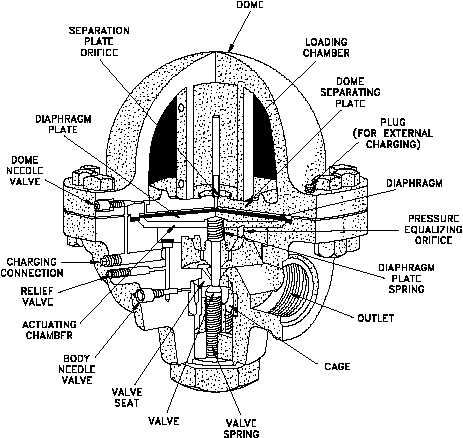Valves
DOE-HDBK-1018/2-93
TYPES OF VALVES
The controlling diaphragm transmits a downward force that tends to open the auxiliary valve.
The downward force is exerted by the adjusting spring, which is controlled by the adjusting
screw. Reduced pressure from the main valve outlet is bled back to a chamber beneath the
diaphragm to counteract the downward force of the adjusting spring. The position of the
auxiliary valve, and ultimately the position of the main valve, is determined by the position of
the diaphragm. The position of the diaphragm is determined by the strength of the opposing
forces of the downward force of the adjusting spring versus the upward force of the outlet
reduced pressure. Other reducing valves work on the same basic principle, but may use gas,
pneumatic, or hydraulic controls in place of the adjusting spring and screw.
Non-variable reducing valves, illustrated in Figure 17, replace the adjusting spring and screw
with a pre-pressurized dome over the diaphragm. The valve stem is connected either directly
or indirectly to the diaphragm. The valve spring below the diaphragm keeps the valve closed.
As in the variable valve, reduced pressure is bled through an orifice to beneath the diaphragm
to open the valve. Valve position is determined by the strength of the opposing forces of the
downward force of the pre-pressurized dome versus the upward force of the outlet-reduced
pressure.
Figure 17 Non-Variable Reducing Valve
Rev. 0
ME-04
Page 29

